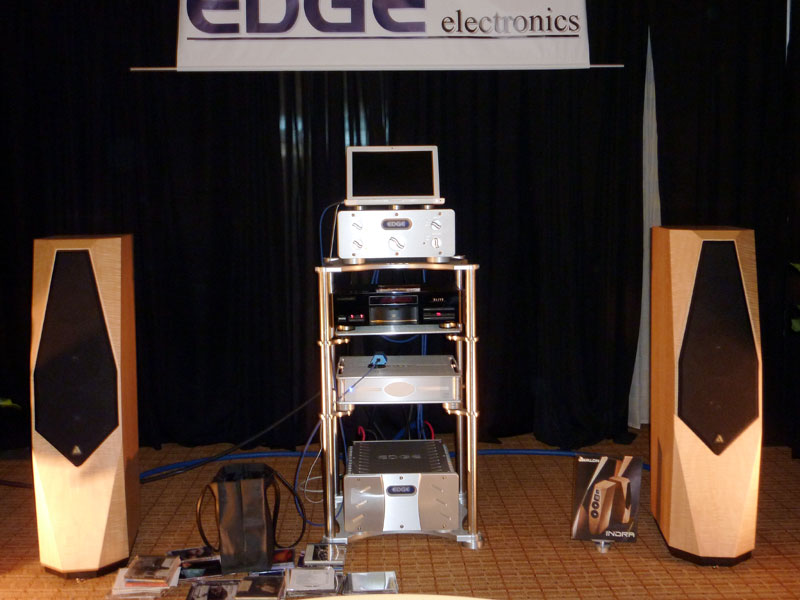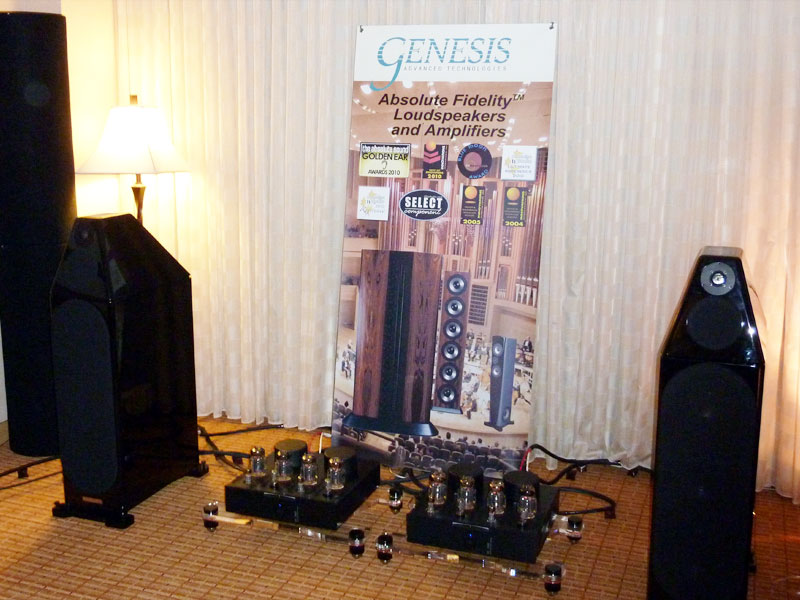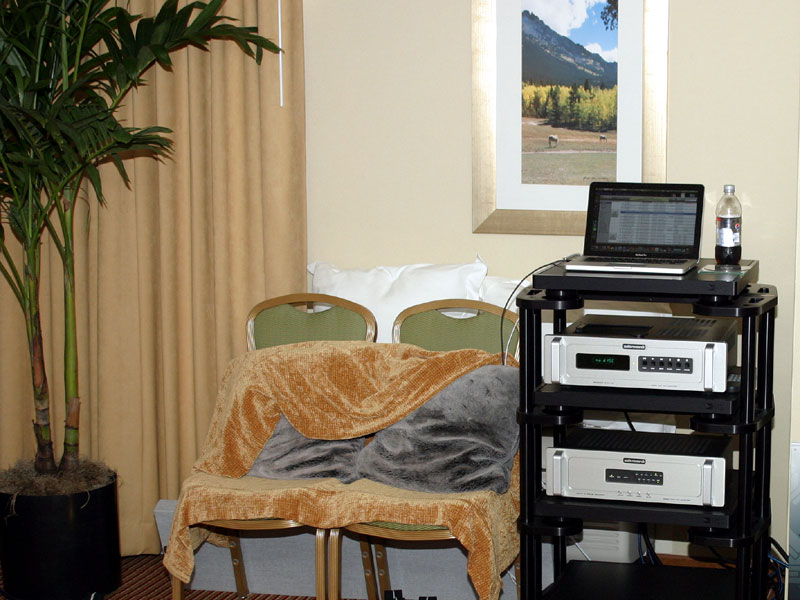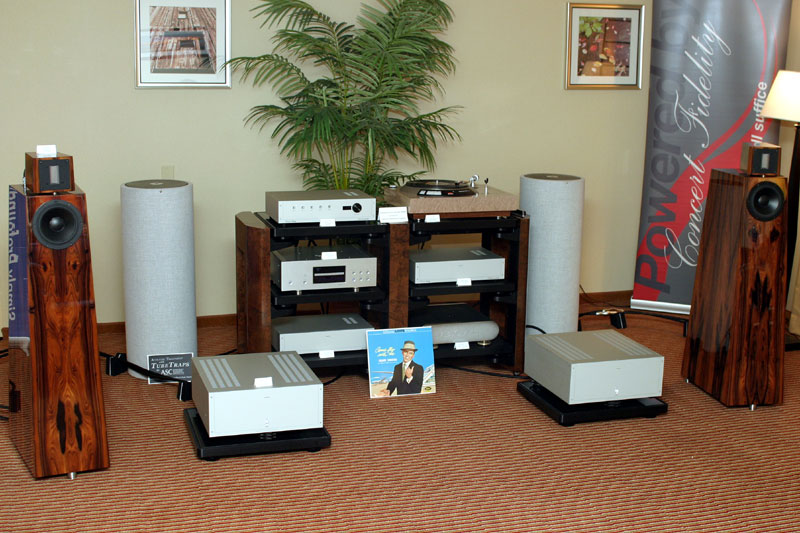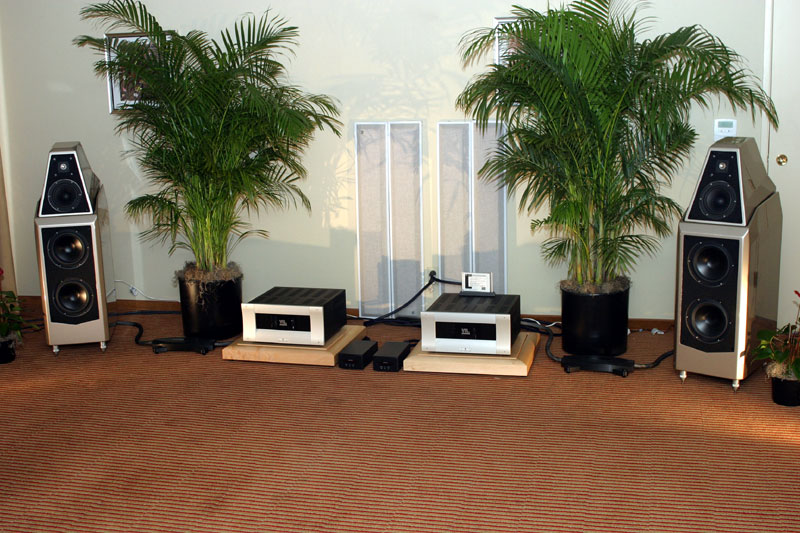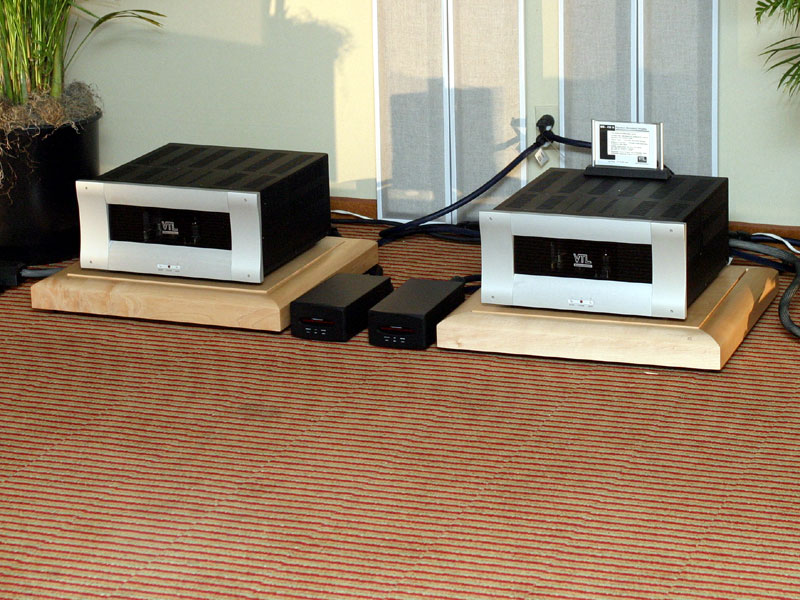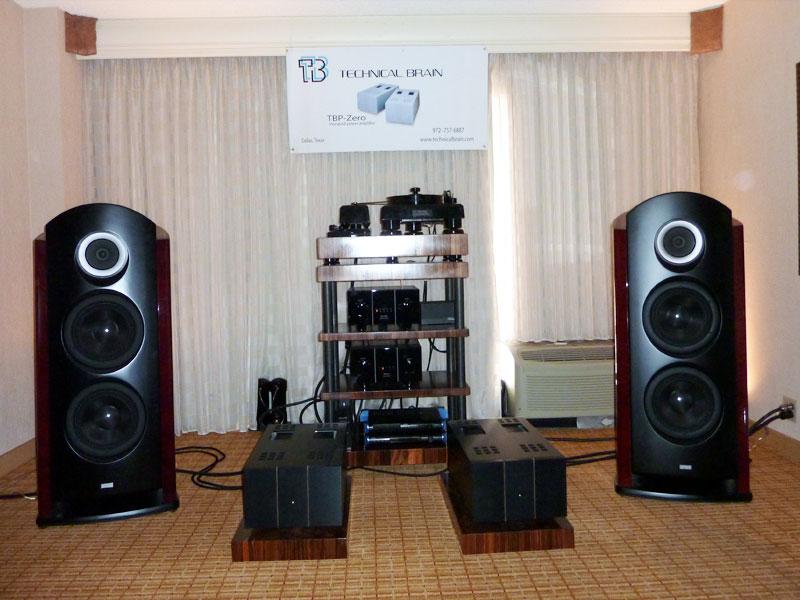Rocky Mountain Audio Fest 2010 • Mile-High Music
Mid-October brings for me the highlight of the American audio year: the Rocky Mountain Audio Fest (RMAF). This year, Denver provided both gorgeous weather and a splendid show. The RMAF has now grown to the point where it is pretty near impossible to see and hear everything. Nonetheless, one soldiers on and, frankly, it’s mighty nice work if you can get it. Soaring The first person I ran into on Friday was Roy Gregory, who promptly escorted me not into the Nordost room but into the Wadia room immediately across the hall, saying, "You must see this, Paul." There he introduced me to John Schaffer, head honcho of Wadia, and John quickly introduced me to Wadia’s new S7i CD player ($17,500), which can also serve as a preamplifier/system controller. Roy endorsed the Wadia player with enormous enthusiasm, and Schaffer explained the advanced technologies with which the S7i is positively bristling, among them USB accessibility featuring a specially optimized clocking scheme, five separate and fully regulated power supplies, selectable upsampling algorithms, and the latest version of Wadia’s proprietary Digimaster filter. Due to the constantly milling crowd in the room, I wasn’t able to take a serious listen, but John agreed to send one along posthaste for review. Now that’s the way to begin an audio festival!
Steven Norber of Edge Electronics is one of the nicest people I know in the audio industry, or pretty much anywhere else for that matter, and he has an undoubted knack for getting better-than-average sound under show conditions. At the RMAF, Steven’s eclectic and always interesting musical selections flowed through Edge’s Signature 1.2 preamp ($14,388), which runs off a battery power supply with AC backup, and a 300Wpc NL 1.2 stereo power amplifier ($24,388) driving Avalon’s always notable Indra loudspeakers ($19,995/pair). Tunes were supplied via Steven’s own highly modified player, which started life as a Pioneer PD-65, and a laptop drove an HRT Music Streamer Pro USB DAC ($499). Cabling was all Cardas Clear, save for the Clear Beyond speaker cables. Edge’s own ACF-2 power conditioner ($3578) cleansed the hotel’s electricity. This was a highly enjoyable, thoroughly relaxed and decidedly un-hi-fi experience in the best of ways. Canada’s Bluebird Music has handled the British Chord line of electronics for years, and has added Peak Consult loudspeakers and van den Hul cables to a solid portfolio of offerings. In Denver, Bluebird’s room featured Chord's Red Reference Mk II CD player ($25,900), CPA 5000 preamplifier ($21,900) and SPM 1400 500-watt monoblocks ($32,900/pair) driving Peak Consult InCognito XII speakers ($22,000/pair) through van den Hul MC Silver interconnects ($7288/meter pair) and Nova speaker cables ($3295/eight-foot pair). The muscle and finesse I have heard previously from Chord electronics were present in full measure, and the Peak Consult speakers were dynamic and solidly musical.
I have no reasonable explanation, but for some stupid reason I don’t ever manage to think about the quite wonderful Genesis Technologies 5.3 loudspeakers ($22,000/pair) between audio shows. Perhaps it’s the Seattle-based company’s somewhat low profile, but the loss, as I inevitably remind myself after time in a Genesis-equipped room at a show, is entirely mine. At the RMAF, this excellently balanced and surprisingly potent-sounding loudspeaker was teamed with Balanced Audio Technology’s VK-P10SE phono stage (with Super-Pak capacitor upgrade) ($9495), Rex Reference line stage ($20,000), D55SE CD player (also with Super-Pak, $9500) and VK-55SE mono amps ($23,980/pair). SOTA provided a Millennium turntable ($9500) that carried a KOSMIC tonearm ($3200) and Bluelectric Magic Diamond cartridge ($6500). Genesis also provided its own custom music server connected to a heavily modified Weiss Minerva DAC, neither of which is remotely a production product, while KOSMIC also handled shelving. Connections were made via Absolute Fidelity interconnects, speaker cables and power cords. One of my favorite demo tracks, Eleanor McAvoy’s "I’ve Got You To See Me Through," really sang in this room, as did the rest of the music I played. After listening to a few tracks, I discussed with Genesis’s Carolyn Koh prospects for acquiring a pair of the 5.3s for review, and she seemed to think that it was as good an idea as I did. Watch this space for potential further developments sometime next year.
Audio Research publicly debuted the spectacular Reference Anniversary preamplifier ($24,995) in the excellent company of the Reference Phono 2 phono stage ($11,995), Reference CD8 CD player ($9995), a DAC 8 digital-to-analog converter ($4995), Reference 210 mono amps ($19,995/pair) and Linn’s classic LP12 ‘table and Ekos SE 'arm fitted with a Lyra Titan i cartridge ($24,000 altogether). Speakers were the now-finalized Vandersteen Model 7 ($45,000/pair). Cabling throughout was top-of-the-line AudioQuest, and racking was provided by Harmonic Resolution Systems.
This system was somewhat paradoxical. The sound was refined and detailed with satisfying body, timbral accuracy and a very natural sense of space. What seemed to be lacking was a dynamic jump factor, something I have heard these electronics provide big time in other contexts. Reading through Vandersteen’s brochure, I was somewhat nonplussed to see that the 7s are rated at a brutally insensitive 83.5dB/1W. The 7s do have powered woofer systems, but I have never before heard the Reference 210s fail to make a loudspeaker pop, dynamically speaking, even in a large room such as the one at the RMAF. I can only conclude that the speakers’ insensitivity had something to do with this, as the 210s can effortlessly blast me out of ARC’s enormous evaluation room when driving the resident Wilson MAXX 3s without exerting themselves in the slightest. An identical set of Audio Research electronics, save for the substitution of a "mere" Reference 5 line stage ($11.995), was present in the Nola room, coupled with Carl Marchisotto’s extremely well-balanced Metro Grand Reference loudspeakers ($22,000/pair). Like Nola’s larger Baby Grand Reference shown at RMAF 2009, the Metro throws as naturally broad and deep an orchestral soundstage as any loudspeaker I have heard. Much to my surprise, the powerful low bass present on the master tapes Carl was using as source material had undeniable wallop and pitch definition despite the Metros’ pair of smallish-looking 6.5" woofers. Perhaps I shouldn’t have found this so surprising, as the entire system was wired with Nordost’s peerless Odin cabling and fitted out with Quantum power conditioning.
On A Higher Note’s Philip O’Hanlon is another person who always seems to get exceptional sound at shows, and the RMAF 2010 was no exception. Vivid Audio’s striking G2 Giya loudspeakers ($50,000/pair) anchored the room, driven by Luxman’s C800P line stage and M 800A stereo amplifier ($19,000 each). Brinkmann’s Bardo turntable ($8000), 9.6 'arm ($4000) and Edison tube phono stage ($12,999) provided highly resolved analog sound. Tying everything together were some prototype cables from Shunyata Research. Shunyata’s Grant Samuelson told me, partly in jest, that if he told me anything about them now I would have to be silenced, but to expect a CES debut. Even in this rather exalted company, the new Audio Aero La Source digital player ($44,000) stood out as something quite special. Choice quality stuff, indeed.
Musical Surroundings pulled out all the stops with two impressive systems, though on all three of my visits the larger and more exotic of the two was playing. This consisted of Clearaudio’s Innovation Wood turntable on its companion Everest Wood stand together with the German company’s Goldfinger v2 cartridge ($10,000 each). Digital was Aesthetix's new Romulus DAC/CD player ($6000). Electronics were Aesthetix's Io VC Eclipse phono preamp ($18,500), Callisto Eclipse line stage ($19,500) and Atlas mono amps ($16,000/pair), wires were TARA Labs RS-1, racking was the elegant and sonically excellent Finite Elemente, and the speakers were the imposing Hansen Emperors ($60,000/pair). I have long respected Jim White’s Aesthetix designs, and the exceedingly well worked-out sound here was definitely worth the multiple visits.
Kaiser Acoustics' wildly impressive and purely gorgeous Kawero loudspeakers ($66,000/pair) were found in two rooms, one featuring Concert Fidelity and Silicon Arts electronics, and the other featuring the latest version of the Kawero in a room where all of the literature regarding the rest of the system was in German, though I was able to identify the manufacturer of the DAC and amplifiers as a company called GTE. In the first room (shown above), the original Kawero was shown with Concert Fidelity’s spanking-new SPA-4C phono stage ($14,000), DAC-040 digital-to-analog converter ($10,000), CF-080LSX line stage ($20,000), and Silicon Arts Design’s ZL-200 mono amplifiers ($40,000/pair and as sweet and natural a transistor amplifier as you will find nearly anywhere). Esoteric’s killer-good X-01 D2 CD/SACD player played the bits, and a big dose of retro cool came courtesy of a modified Denon DP-3000 turntable from the 1980s carrying a Shelter moving-coil cartridge. In both rooms, the Kawero showed itself to be something well out of the ordinary, as was proved again when I heard them at the home of my audiobuddy David in the Twin Cities. This is a speaker worth going well out of your way to hear. Top of the Rockies
VTL teamed with dCS, Wilson Audio, Basis, and Transparent Audio for the introduction of the Series III versions of the TL-7.5 Reference preamplifier ($20,000) and MB-450 Signature mono power amplifiers ($18,000/pair). Sharing the stage with VTL’s new babies were a complete suite of dCS's Paganini digital equipment: transport ($16,999), clock ($7999), DAC ($17,999), and upsampler ($10,499); Wilson Audio’s Sasha W/P speakers ($26,900/pair); and a complete loom of Transparent’s Reference MM2 cabling ($70,000). Transparent also provided PLMM and PIMM power products ($26,000). VTL’s Bea Lam spun LPs on A.J. Conti’s beautiful Basis Inspiration turntable kitted out with his Vector 'arm ($47,000 total) and a MY SonicLabs Ultra Eminent EX cartridge ($6800) through VTL’s TP-6.5 Signature phono stage ($8500). Revisions to the '7.5 include a significant redesign of the power supply, a newly optimized gain stage, and the use of what VTL calls "normally-on" FETs in the output stage, which Luke Manley explained operate electrically in a fashion very similar to that of tubes.
The MB-450 has always been a rock-solid and thoroughly satisfying amplifier, but the VTL team has rethought virtually every aspect of it save for its handsome metalwork. The ‘450 now sports a fully differential balanced input stage, driving a differential phase splitter, a lower-impedance output stage, and a totally new, fully balanced and "enhanced interleaved and coupled" output transformer. To cap the package, one can now select from four different output impedances by varying the amplifier’s amount of total negative feedback, though Luke made clear in his Friday-morning presentation to a large group of audio writers that in this case less is always better. I’ve heard every version of this preamp and amplifier that VTL has offered; they have never been less than excellent and have often been superb. But there was no mistaking that VTL has taken a very noteworthy step forward with the Series IIIs. I feel safe in this conclusion based on my extensive experience with the Wilson Sashas, in Denver set up expertly by Wilson Audio’s Peter McGrath. I spent more than an hour of Saturday afternoon listening to McGrath’s exceedingly vivid and lifelike classical recordings and eventually had to remind myself to get my rear out of the chair and get back to covering the show. "Captivating in every way," and "Pack it up. I’ll take it all home now," would be my considered comments regarding this system.
As good as the previously mentioned rooms were -- and the VTL-based room made this a close call indeed -- I have saved my personal "best of show" for last. Late Sunday morning I made a point of stopping in the Technical Brain/TAD room. There, Mr. Naoro Kurosawa, the designer and sole builder of the Technical Brain electronics, and Frank Dickens, the brand’s new and first authorized American distributor, were showing the TB-Zero-Ex amplifiers ($60,000/pair, 350 and 700 watts into 8 and 4 ohms, respectively), TB-Zero line stage ($35,000) and matching TB-Zero phono stage ($35,000). A Walker Audio Proscenium Black Diamond II turntable ($79,500 including setup in the buyer’s home) with an Air Tight cartridge played the LPs. TAD’s Reference One loudspeakers ($60,000/pair) completed the system. I have been going to audio shows for a long while, and only once or twice have I heard under show conditions anything that blew me away like this. From the first piano chord of Eleanor McAvoy’s "I’ve Got You to See Me Through," a tingle of electricity shot up my spine right into the back brain, and I was completely swept away by the utter rightness of the system’s sound on this longstanding reference track. There was a surpassingly tube-like sweetness and timbral rightness that I have never quite heard from any solid-state electronics before -- not even FM Acoustics or Silicon Arts, my favorite non-tube amplifiers -- and a combination of bloom and iron grip on the kick drum and Eoghan O’Neill’s gut-rumbling five-string bass guitar. Soundstaging was spot-on in size and holodeck-real; the apparent noise floor was so remarkably low that I was immediately reminded of the freakishly excellent, apparently now-vanished Halcro amplifiers of the mid-2000s. Air, delicacy, tangibility, bloom, control, dimensionality -- the Technical Brain electronics laid it all out in the space of a half-hour’s time. The electronics are not quite like anything else
internally, either. Kurosawa-san, a man of broad and deep experience in both the repair
and design of all types of audio electronics, has eliminated emitter resistors from his
circuits as well as all relays, line fuses, and mechanical contacts. The result is the
above-mentioned breathtaking tonal purity and extraordinary resolution. Even for those
with sufficiently well-packed wallets, the Technical Brain electronics will remain
something of a rarity. Mr. Kurosawa builds every piece of gear by hand, and only 40 pairs
of the amps are available each year. Still, I intend to pester Frank Dickens until he
provides a pair of these spectacular amplifiers for review following January’s CES. |

